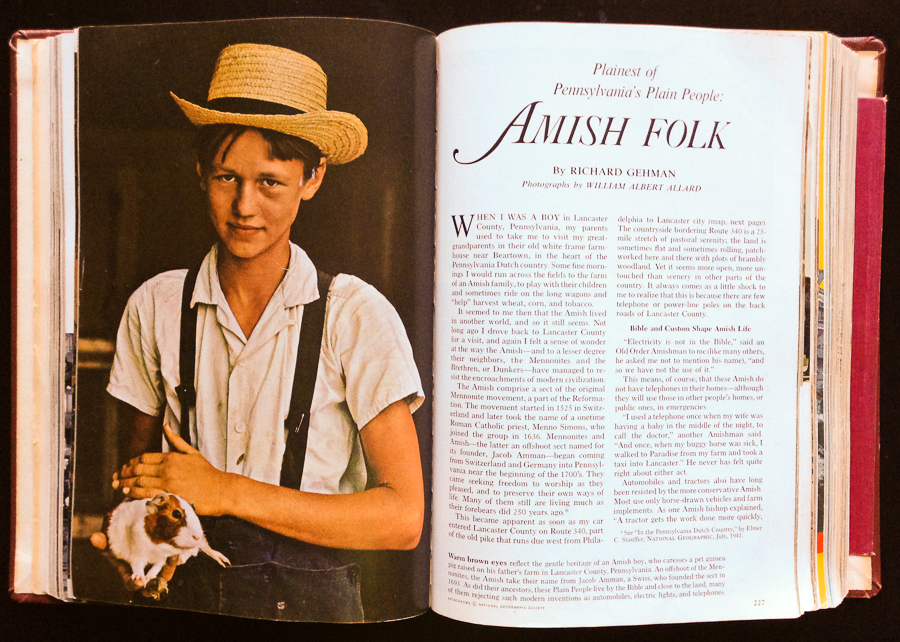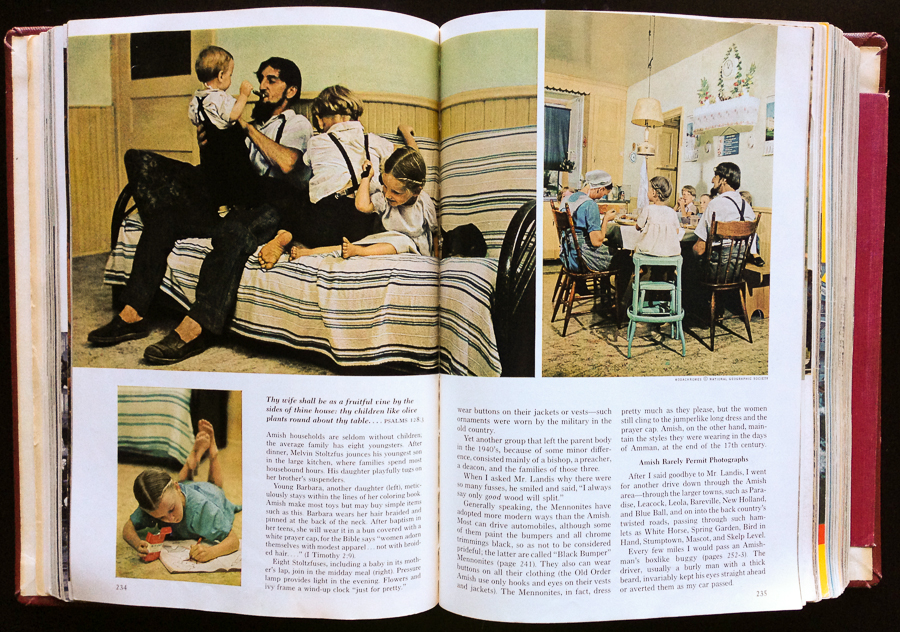Amish story in photographs of William Albert Allard
After I posted my first thoughts on Robert Weingarten “Another America” on G+, Ray Ketcham suggested taking a look at work by William Albert Allard. This National Geographic photographer made the legendary series of images of the Amish. Work done with approval of Amish community and to extent they felt comfortable. No sneaking around their communities with long telephoto lens.
Finding these photographs was not, however, an easy task. They were originally published in August of 1965 in National Geographic magazine. Thanks to large University library, I was able to get a hold of the really archival issue of NG for few days. And while photographs were exquisite, so was the story accompanying them. I learned a great deal about Amish and Mennonites, and their customs and beliefs. Things I never noticed or realized.Like the facts that there are many sects, allowing and disapproving of various things.
The 14 spread long story is filled with photographs taken while Amish people were at work, on the fields or in the kitchen. There are also intimate, family settings, at the dinner and at play. There are children, young and older, nobody is left behind. There are community activities, like barn building, and a view of the store in local community, providing clothing for Amish.
What is the most astonishing is to this day, the photographs taken by William Albert Allard in 1964 are still relevant. After all, the Amish did not change their ways, and looking at them, dressed and go about their lives in 1964 is quite the same as you would look at them now. And apart from Robert Weingarten’s phootgraphs from the distance, I am not aware of any other such focused account of the Amish. And how different both accounts of lives of “Plain people” are, by those two photographers.
To learn more about William Albert Allard:
To learn more about Iowa Amish:
- Iowa Amish – locations and history
UPDATE: the whole article as it appeared in National Geographic can be found online at Nat Geo archive site.

